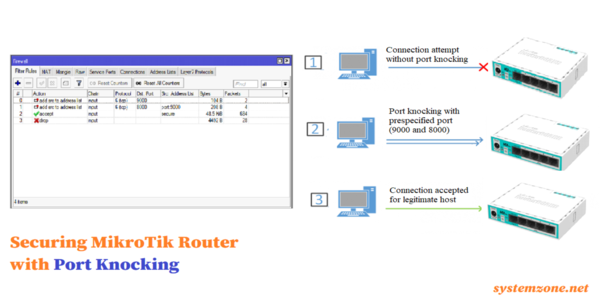Configuring MikroTik Router As A Transparent Proxy Step-by-Step Guide
When it comes to proxy servers, two methods are commonly used - transparent and explicit proxy. Both methods have their own advantages and disadvantages. In this post, we will discuss the two methods in detail and help you decide which one you should use for your organization.
Transparent Proxy
Transparent proxy is a type of proxy server that intercepts network traffic transparently, meaning it operates without modifying requests from clients or responses from servers. It works by redirecting traffic from clients to a proxy server and then forwarding the traffic to the destination server. This way, clients are unaware of the existence of a proxy server and communication happens as if there is a direct connection to the destination server.
Transparent proxy is commonly used in corporate networks where it can be deployed without requiring any configuration changes on end-user devices. It is also ideal for organizations that want to monitor network traffic without requiring any client-side configuration.
Advantages of Transparent Proxy
- Simplicity: Transparent proxy is easy to deploy and requires no special configuration on end-user devices.
- No client-side configuration: With transparent proxy, there is no need to reconfigure each end-user device to use a proxy server.
- Monitoring: Transparent proxy allows for easy monitoring of network traffic, enabling organizations to track usage, block unwanted sites, or set policies.
Disadvantages of Transparent Proxy
- Lack of Anonymity: Transparent proxy can be considered a breach of user privacy since it exposes user information to the proxy server. This makes it unsuitable for organizations that require a high degree of anonymity.
- Network Latency: The use of a transparent proxy can lead to network latency, as all traffic is detoured through the proxy server even if no filtering or monitoring is taking place.
- No User Control: With transparent proxy, users have no choice about using the proxy or not. They are automatically directed to the proxy server, making it impossible to bypass.
Explicit Proxy
Explicit proxy, on the other hand, requires client-side configuration. It works by configuring each end-user device to use a proxy server for their internet connection. Unlike transparent proxy, explicit proxy does not intercept traffic but is instead directly contacted by the client when a request is made.
Since user devices are required to be configured manually, explicit proxy is only suitable for small networks. Larger networks would require a lot of time and effort to set up client-side configuration.
Advantages of Explicit Proxy
- Anonymity: Explicit proxy provides a higher degree of anonymity since it does not expose user information to the proxy server like transparent proxy does.
- Performance: Explicit proxy can offer better performance than transparent proxy since each user device directly contacts the proxy server without having to detour through the proxy.
- User Control: With explicit proxy, users have control over whether or not they use the proxy server.
Disadvantages of Explicit Proxy
- Complex Configuration: Explicit proxy requires manual configuration on each end-user device, which can be time-consuming and error-prone.
- Monitoring: Monitoring network traffic with explicit proxy can be difficult since each device needs to be configured to use the proxy server, making it impossible to monitor devices that bypass the proxy.
- Maintenance: Maintaining explicit proxy can be a challenge since it requires individual configurations for each device and can be difficult to troubleshoot if errors occur.
Which Method Should You Use?
Choosing between transparent and explicit proxy depends on the specific needs of your organization. Transparent proxy is simpler to configure and manage, making it ideal for large networks. It is also suitable for organizations that require monitoring of network traffic and do not require a high degree of anonymity.
Explicit proxy, on the other hand, provides a higher degree of anonymity and better performance but requires individual configuration on each device. It is ideal for small networks and organizations that require a high degree of anonymity.
Conclusion
When it comes to choosing between transparent and explicit proxy, it is essential to consider the specific needs of your organization. While transparent proxy is simpler and easier to manage, it may not be suitable for organizations that require a high degree of anonymity. Explicit proxy offers more anonymity and better performance but requires individual configuration on each device, making it ideal for small networks.
Regardless of the proxy method you choose, it is important to ensure that the proxy server is secure and that policies are in place to prevent unauthorized access.




Post a Comment for "Configuring MikroTik Router As A Transparent Proxy Step-by-Step Guide"